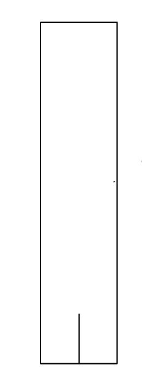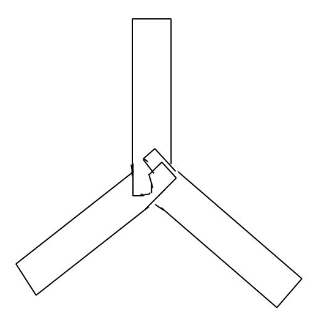A indoor boomerang can be constructed using 3 strips of cardboard put together. Throwing it may require some practice though but when you get the hang of it, it can inject great fun into your lesson. You can explore using different types of material to get the best boomerang.
Materials
- Cardboard about 1 mm thick, of suitable rigidity
- Staples
- Scissors
- Rubber band or tape for added weight
Procedure

- Cut 3 equal rectangular strips of cardboard measuring 12 cm x 2.5 cm. You may like to trim the sharp corners on one of the ends of each strip.
- Cut a slit of 1.5 cm along the middle of each strip, on the untrimmed end.
- Join the strips together at the slits, the angle between two adjacent strips being 120 degrees.
- One side of the slit should overlap another so that it looks like the above:
- Staple the overlapping centre together.
- The boomerang is ready for use! Throwing the boomerang is done by holding onto one of the wings. The boomerang should be almost vertical, at an angle of about 10o. With a flick of the wrist, spin the boomerang as it leaves the hand. The direction of spin should be toward the side that is tilted up.
Science Explained
A boomerang requires a centripetal force to cause it to fly in a circular path back to the thrower. This centripetal force comes from the lift that the wings generate as they cut through the air.
